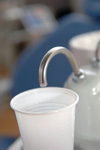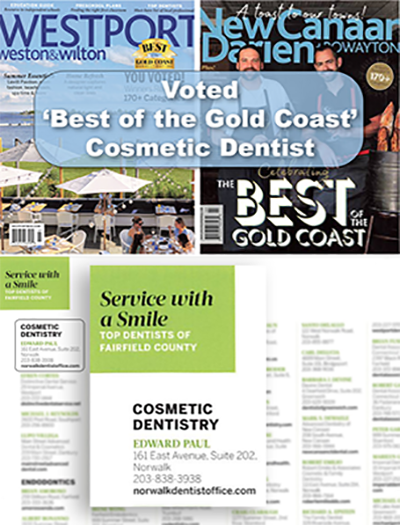Infection control is a set of recommended safety precautions that we put in place to protect both our patients and ourselves. Many dental procedures involve direct contact with blood and saliva. Strict infection control helps to stop the spread of disease. Improved infection control procedures call for the instruments and supplies we use to be either sterilized or disposed.
What are standard precautions?
Standard precautions are safety procedures established by the Centers for Disease Control and Prevention (CDC) and the American Dental Association (ADA) to make sure every patient is safe. These precautions require us to wear appropriate protective items, such as gloves, masks, and eyewear. We can use different kinds of protective gloves. Latex, vinyl, or nitrile gloves are used for patient examinations and procedures and are worn whenever skin could make contact with body fluids. We throw our gloves away after seeing each patient, wash our hands, and then put on a new set of gloves.
What else do we do to protect you?
We also make sure that the instruments we use during dental procedures are clean by sterilizing them, a process that destroys all forms of microbial life. Some protective items such as gloves, masks, paper drapes, water cups, suction tube tips, and needles do not need to be sterilized because they are used only once, then thrown away.
Do we sterilize instruments after each patient?
We sterilize the drill and other instruments between patients to prevent the transmission of diseases. We follow and monitor specific heat sterilization procedures, which are outlined by the CDC and the ADA. Our instruments are sterilized in special machines because it takes much more than just soap and water to make sure instruments are free of bacteria. Recommended sterilization methods include placing these instruments into an autoclave (machine which uses steam under intense pressure) or immersing items in a bactericidal, hospital-grade disinfecting solution. This equipment is kept on-site in the office. We use an outside university-based laboratory to regularly monitor our sterilizing machines to ensure they are always working properly.
How are other objects sterilized?
Before you enter the examination room, all surfaces are disinfected. To sterilize equipment that can’t be moved, such as X-ray units and countertops, a disinfectant is applied, or some items are draped with protective covers, which are replaced after each patient. Disposable sharp items such as needles that cannot be sterilized are thrown away in puncture-resistant biohazard containers. All disposable items that are contaminated with blood are discarded in a special container.

 Click or Scan Code
Click or Scan Code